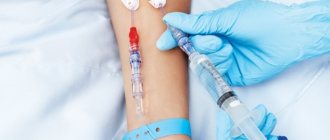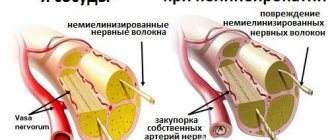Why is appendicitis dangerous?
Appendicitis is a medical emergency requiring rapid surgery to remove the appendix. If left untreated, the inflamed appendix eventually ruptures, spilling infectious materials into the abdominal cavity. This situation can lead to peritonitis, a serious inflammation in the abdominal cavity (peritoneum) that can be fatal if not promptly treated with strong antibiotics.
Sometimes appendicitis is accompanied by a purulent abscess (an infection that is “walled off” from the rest of the body). Scar tissue separates the appendix from the rest of the abdomen, preventing infection from spreading. An appendix abscess is less of an emergency than peritonitis, but unfortunately cannot be identified without surgery. For this reason, all cases of appendicitis are considered emergencies requiring surgery.
Treatment of appendicitis and recommendations for prevention
Treatment for inflammation of the appendix involves surgical removal. Removal can occur by open surgery or laparoscopy. Techniques have also emerged for removing the inflamed appendix through a person’s natural orifices (a small incision is made in the stomach through the mouth). The surgery takes about 20–30 minutes. Typically, after the operation, 7–10 days are spent in the hospital, then the external postoperative sutures are removed and the patient is discharged.
Full recovery after laparoscopy takes 2–4 weeks, recovery after open surgery takes up to six months. The first day, food and liquid intake are prohibited for the first few hours. The incision is cleaned daily with an antiseptic solution until discharge from the hospital. Obese people and children are advised to wear a bandage. It is required to strictly follow a diet after surgery, to exclude fatty, fried, spicy and salty foods - everything that can irritate the intestines. Eliminate the risk of constipation.
Surgeries to remove the appendix are usually easy. Photo: pixabay.com
Symptoms of appendicitis
Classic symptoms of appendicitis include:
- A dull ache near the navel or upper abdomen that becomes sharp in the lower right abdomen. This is usually the first sign of appendicitis.
- Loss of appetite
- Nausea and/or vomiting soon after abdominal pain begins
- Bloating
- Temperature 37.2-38.8
Additional symptoms of appendicitis:
- Dull or sharp pain anywhere in the upper or lower abdomen, back, or rectum
- Painful urination
- Vomiting that precedes abdominal pain
- Severe cramps
- Constipation or diarrhea with gas
If you have any of these symptoms, consult your doctor immediately because timely diagnosis and treatment of appendicitis is very important. Don't eat, drink, take laxatives, or use heating pads, anything that could cause your inflamed appendix to rupture.
Intraoperative consequences of appendectomy
According to studies, intraoperative abnormalities occur in 1-4% of patients with acute appendicitis. The reason is tactical or technical errors. All intraoperative consequences are divided into the following groups:
Article on the topic: Lithium drugs: list, indications, instructions for use, side effects
| Consequences group | Consequences |
| Associated with pneumoperitoneum |
|
| Laparoscopic access |
|
| Specific complications of appendectomy |
|
| Electrosurgical (always pose a particular danger to the patient and are associated with errors by the operating surgeon or medical staff) |
|
How is appendicitis diagnosed?
Diagnosing appendicitis can be a difficult process. Symptoms of appendicitis are often vague or extremely similar to other ailments, including gallbladder problems, bladder or urinary tract infections, Crohn's disease, gastritis, intestinal infections and ovarian problems.
The following tests are typically used to diagnose appendicitis:
Subscribe to our YouTube channel!
- Examination of the peritoneum to detect inflammation
- Urinalysis to rule out urinary tract infection
- Rectal examination
- Blood test to see if your body is fighting infection
- CT and/or ultrasound
Diagnosis of acute appendicitis
In order to prevent complications of acute appendicitis, timely diagnosis is necessary, first of all it consists of a general and palpation examination of the patient. A general examination of the patient will allow you to assess how the abdomen takes part in the breathing process. The thing is that in a normal healthy state, uniform breathing and the active participation of the abdomen in it are noted. But if there are signs or suspicions of the presence of local peritonitis, then this can be confirmed or refuted by abdominal movements. If appendicitis develops in the right iliac region, then the stomach will be slightly behind in breathing on the right. Visual evidence can also be a displacement of the navel to the right side.
During palpation examination, as a rule, there is sharp pain in the iliac region on the right. The patient will experience the most severe pain in the place that, in projection onto the anterior abdominal wall, corresponds to the location of the appendix. If you turn a person on his left side, the pain will be detected closer to the navel. In this position, the pain is felt many times more acutely than when examining a person lying on his back.
During palpation, the doctor can detect muscle tension, which rather serves a protective function. Unexpressed, slight tension may be a sign of an ongoing inflammatory process. If muscle tension is strong enough, this may indicate the development of peritonitis.
The most famous and informative method of palpation is the method in which the doctor, gently pressing on the right iliac region, holds the hand in this position for a certain period of time. Then he abruptly removes his hand. The patient feels severe sharp pain. The resulting pain is associated with irritation of the peritoneum. This is a reliable symptom, in medical language called the Shchetkin-Blumberg symptom.
Laboratory diagnostics if the development of acute appendicitis is suspected will reflect an increased content of leukocytes in the test results. This increase can be several times greater than normal. There is a shift in the leukocyte formula to the left. In addition, the erythrocyte sedimentation rate will also be increased.
The method of percussion of the abdomen is interesting and quite unusual. It consists of causing a concussion of the patient’s body and determining the presence of peritonitis by the pain formed due to the shaking of the peritoneum. An experienced doctor does not even need to touch the patient. He can simply move the bed, supposedly by accident, thereby causing unexpected movement of the person and, accordingly, the peritoneum.
The most informative method for diagnosing the disease and preventing complications of acute appendicitis is laparoscopy. With its help, you can visually determine the presence of inflammation. This examination method is applicable in cases where there are difficulties in making a correct diagnosis, even if other diagnostic methods have been used.
How to treat appendicitis
Surgery to remove the appendix, called an appendectomy, is the standard treatment for appendicitis.
In general, if appendicitis is suspected, doctors tend to err on the side of safety and quickly remove the appendix to avoid rupture. If appendicitis has formed an abscess, you may have two procedures: one to drain the abscess's pus and, later, to remove the appendix. However, there are some studies showing that treating acute appendicitis with antibiotics may eliminate the need for surgery.
Postoperative complications of appendicitis
In surgery, a distinction is made between early and late postoperative complications. The first ones occur within 12-14 days after appendectomy
. These include pathologies from the surgical wound and neighboring organs. Such consequences are subject to urgent sanitation and drainage. After the 2-week period, late complications may develop. Causes of postoperative disorders:
- delayed diagnosis;
- late appendectomy;
- chronic diseases;
- advanced age;
- failure to comply with doctor's instructions after surgery.
From the side of the surgical wound
Complications from the surgical wound are considered the most common, but relatively safe. They are associated with the depth of destructive changes in the appendix and the method of suturing the subcutaneous tissue and skin. The most common consequences after appendectomy:
- wound suppuration;
- infiltrate;
- ligature fistula;
- eventration;
- seroma.
From the digestive system
Postoperative gastrointestinal disorders are more common, since its organs are located in close proximity to the appendix. After surgery, appendicitis can cause the following pathologies:
- peritonitis;
- abscess or ulcers of the abdominal cavity;
- intestinal fistulas;
- postoperative hernia;
- bleeding into the abdominal cavity;
- acute postoperative intestinal obstruction.
From other authorities
Postoperative consequences can affect the respiratory, cardiovascular and excretory systems. The frequency of their occurrence is 0.41%. Pathologies of their organs:
- blockage of the pulmonary artery or its branches;
- acute cystitis, nephritis, pyelitis;
- urinary retention;
- bronchitis;
- pneumonia;
- pleurisy;
- abscess and gangrene of the lungs;
- cardiovascular failure.
Appendectomy: What to Expect
Antibiotics are usually prescribed before appendectomy surgery to combat potential peritonitis. Anesthesia can be either general or local, and the appendix is removed after approximately 12 cm. incision or laparoscopy. If you have peritonitis, a procedure is done to remove the pus in the peritoneum.
You can get up and move around for 12 hours after appendectomy surgery. A patient who has had their appendix removed can usually return to normal activities within two to three weeks. If appendectomy surgery is performed using a laparoscope, the incision is much smaller and recovery is faster.
After an appendectomy, contact your doctor if you have:
- Uncontrollable vomiting
- Increased abdominal pain
- Dizziness/feeling lightheaded
- Blood in urine or vomit
- Increased pain and redness at the incision site
- Temperature
- Pus in the wound
Consequences of appendicitis removal
Appendectomy, that is, removal of the appendix, a small extension of the large intestine, is a very common operation. Inflammation of appendicitis is the most common cause of the so-called acute abdomen, that is, a complex of suddenly developing symptoms: abdominal pain, nausea, vomiting, loose stools. Inflammation of appendicitis can occur at any age. Although the peak incidence occurs in children and in the second, third and early fourth decades of life, people are increasingly being operated on in old age due to acute appendicitis. This is due to the fact that we live longer and longer. If surgery to remove appendicitis is not performed, life-threatening complications may occur.
Cost of appendicitis removal
If you are interested in the cost of appendicitis removal in one of the private clinics in Ukraine, then you should visit the website of the Omega-Kyiv clinic. After reading the information on this resource, you will receive answers to all your questions regarding appendectomy.
Acute appendicitis - causes
In more than half of cases, the cause of inflammation of appendicitis is difficult to determine. Among the most common factors influencing the occurrence of this disease are:
- viral infections (lead to periodic swelling of the alveolar tissue);
- presence of fecal stones;
- presence of appendicitis ulcer;
- the presence of human roundworm or other parasites that can block the passage of the appendix.
Acute appendicitis can be life-threatening, and therefore is an indication for appendicectomy, that is, surgical removal of appendicitis. The operation is usually preceded by antibiotic therapy, intravenous injections, irrigation, and preparation carried out in a hospital setting. For successful healing, time is very important - the delay should not exceed one or, at most, several hours.
Behavior after surgery
The duration of the operation is an individual matter. Usually, however, the operation does not take long - it lasts from a few minutes to two hours. After its completion, the patient remains in a supine position for several hours, and then gradually returns to activity. The decision to remove the drainage from the abdominal cavity is made by the surgeon who performed the operation. Sutures are removed 8-10 days after surgery, which does not mean an immediate return to daily activities and work. Typically, the patient must undergo a recovery period, which takes about 3-4 weeks. If there are no complications, the patient can return home even two days after the operation.
Possibility of complications after surgery
Complications that may occur after appendectomy include:
- peritonitis,
- postoperative wound infections,
- bleeding into the peritoneal cavity (requires repeat surgery),
- appearance of hematomas in the wound.
Damage to the bladder or colon and the appearance of an abscess in the abdominal cavity or a hernia in the scar are much less common.
There may also be mild swelling and pain in the wound area. The appearance of pain requires an immediate blood test for ESR. If the patient does not feel pain or other ailments such as bloating, nausea or vomiting, but is only concerned about changes in the wound area, they should consult a doctor within the next few days.
Redness at the appendectomy site may also indicate an infection, which, if minor, can be treated with antibiotics. It is important to follow your doctor’s recommendations during the recovery period and contact your surgeon directly if you have any questions.
Can appendicitis be prevented?
Medicine does not know any way to prevent appendicitis. However, appendicitis is less common in people who eat high-fiber foods, such as fresh fruits and vegetables.
Author of the article: Irina Surkova, Moscow Medicine©
Disclaimer: The information provided in this article about appendicitis is intended to inform the reader only. It is not intended to be a substitute for advice from a healthcare professional.












